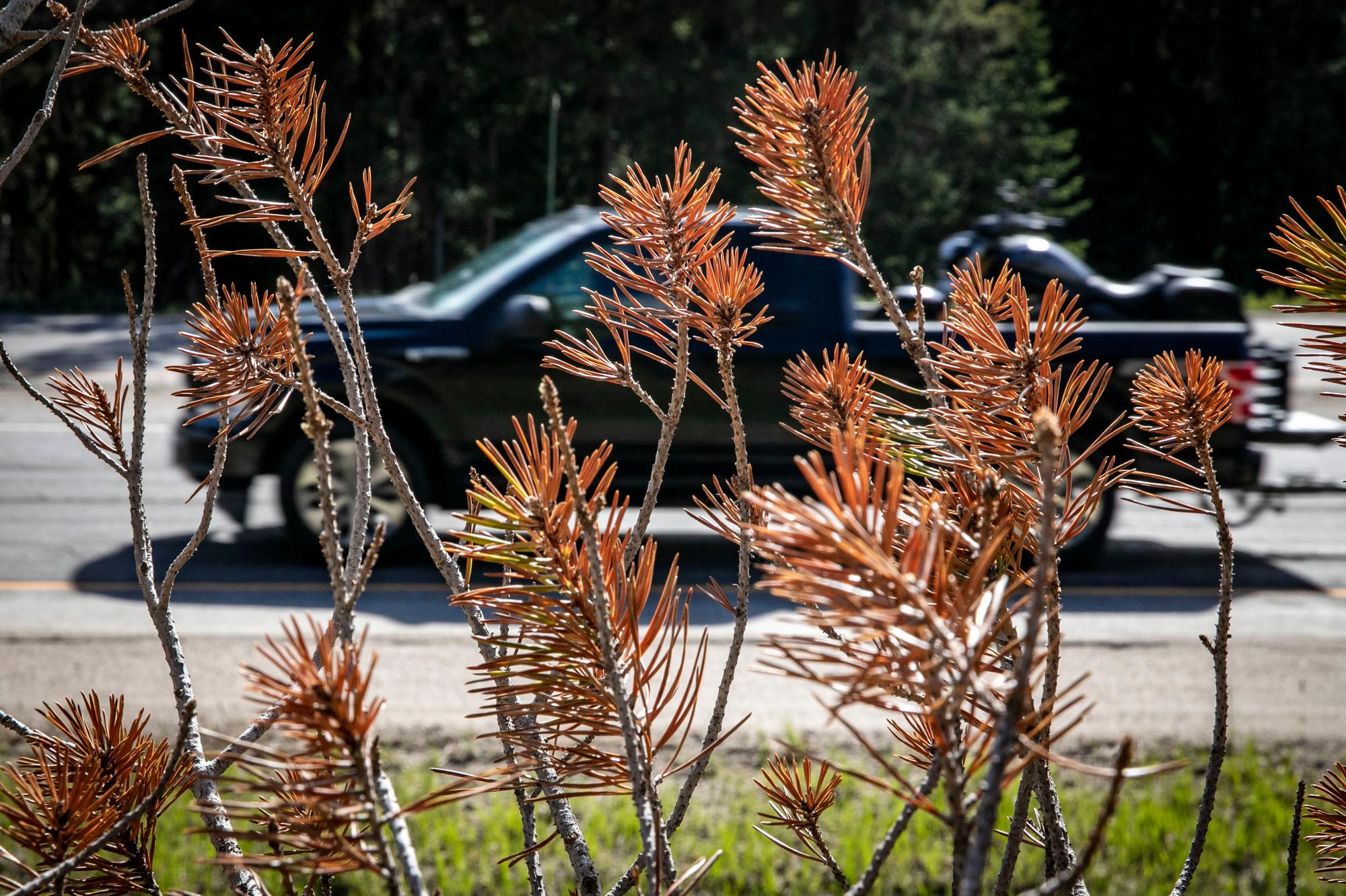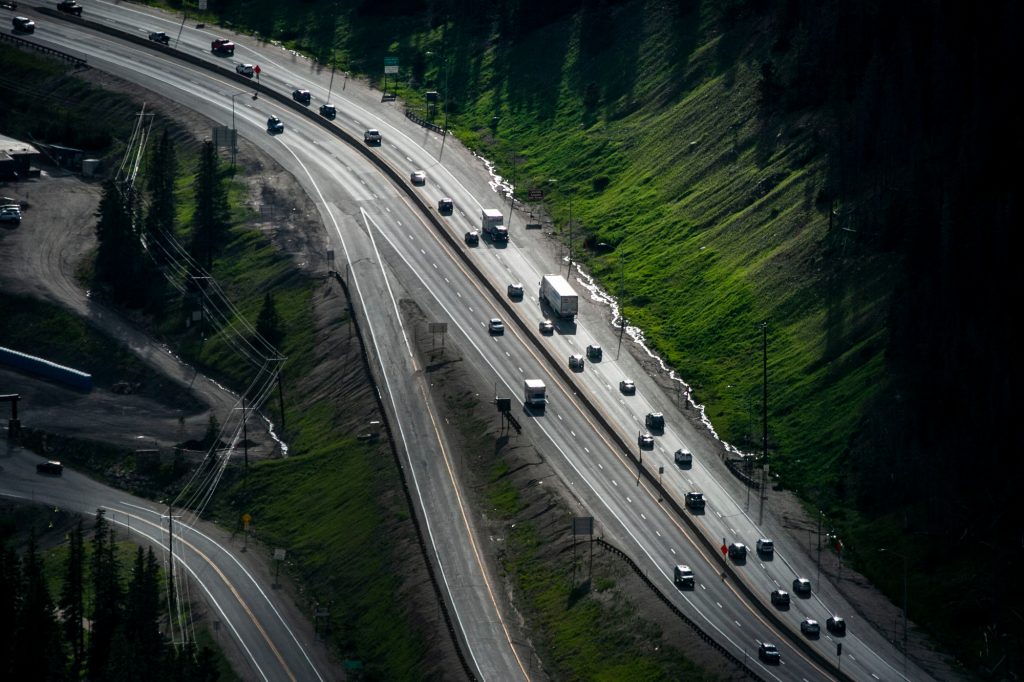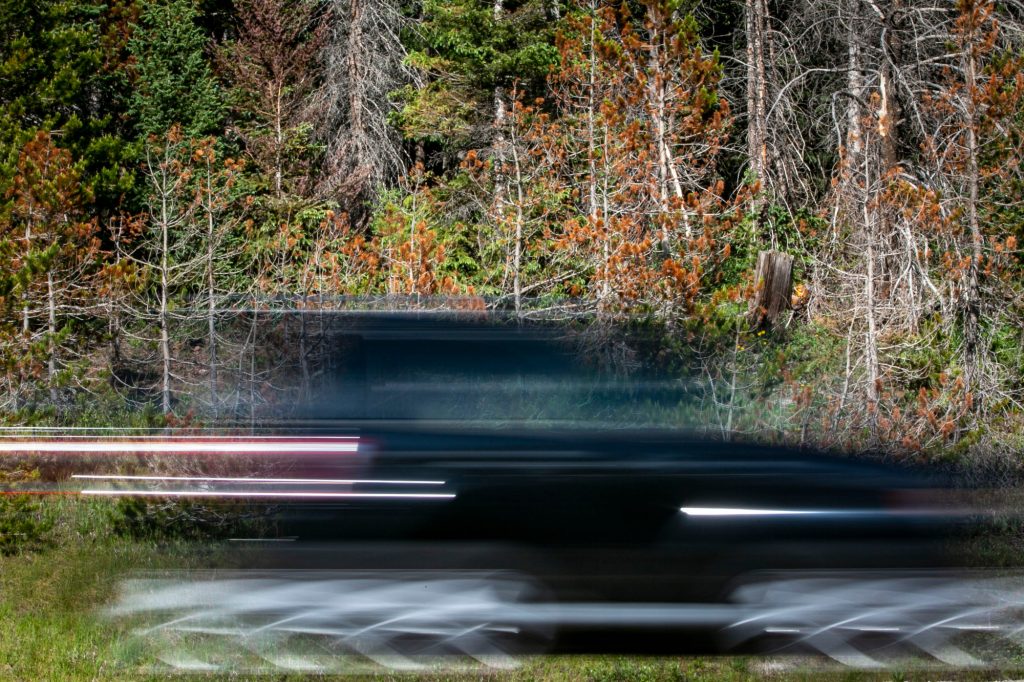
Colorado’s forests are under constant stress from wildfires, drought and beetle infestations — much of this brought on by the worsening effects of human-caused global warming.
But there is another human factor contributing to that stress, targeting trees that border highways in the mountain region.
One Colorado Public Radio listener noticed pine trees with dead, brown needles along the Interstate 70 corridor and State Highway 119 in Gilpin County. They reached out to Colorado Wonders — an ongoing project where readers and listeners can ask questions about life in the state — to learn more about what was killing those trees.
“I’ve seen dead trees along the roads before, but I feel like I’ve seen a lot more this year,” said the questioner, who asked to remain anonymous. “Or maybe I’m paying attention to it.”
The problem may lie with the booming tourism and recreation industry in Colorado’s mountains and the products used by the Colorado Department of Transportation to keep the roads free of snow and ice.

In 2004, the department commissioned a study by the University of Northern Colorado after noticing the issue. It found a strong correlation between tree health and road salt application, particularly granular salt and magnesium chloride.
“We've known that salt is harmful for vegetation since forever, since Roman times, since people were salting fields,” said ecologist Nicole Trahan, who co-wrote the study. “It’s very clear to us at that point that road salt was a problem.”
Out of all the observed factors, the study found that conifer tree damage strongly correlated with the amount of sodium and chloride in the needle tissue and soil. The salts “burn” the tip of the needles, and older needles further down the branch fall prematurely. (Trahan found similar results in greenhouse studies.)
If the needles facing the road are browning while those away from the road are not, it’s likely to be a sign of salt damage, Trahan said.
Exposure to those salts, she said, also depends on wind, slope and the spray from cars as they streak across the highway. That spray can travel anywhere from 30 to 300 feet from the highway, said Tyler Weldon, state maintenance engineer for CDOT.
Before CDOT began using deicers, Interstate-70 would close throughout the winter, CDOT spokesperson Bob Wilson said. The department, he said, then began to spray road salts on highways in the mid-1990s.
Traffic on I-70 has surged over the years
With that has come an expectation to keep the roads from the Front Range to the Rockies open. Traffic on I-70 has increased significantly over the years, reaching an all-time high of nearly 13.5 million vehicles in 2018, according to traffic counts conducted by CDOT.
“CDOT is under a lot of pressure to keep those highways open and keep business flowing,” Weldon said.
Experts suspect this, along with vehicle pollution and the extreme drought, is leading to more dead or dying trees along the highways.
Trahan proposed that acetate-based deicers could still remove snow and ice without spraying harmful chlorides. But those products are more expensive, and Weldon said CDOT does not use them.

Snowplows continue to use the “tried and true” deicers to keep highways open, Weldon said. County agencies also spray magnesium chloride on dirt roads during the summer to suppress dust.
The trees that border these roads are the casualty of having year-round access to the mountains and doing so in a more cost-effective way, Trahan said.
“I think people were willing to pay the price to have the roads open,” she said.
What are you curious about when it comes to life in Colorado, be it culture, government, people or the rest of the Centennial state? Help shape our reporting by telling us what matters to you.









